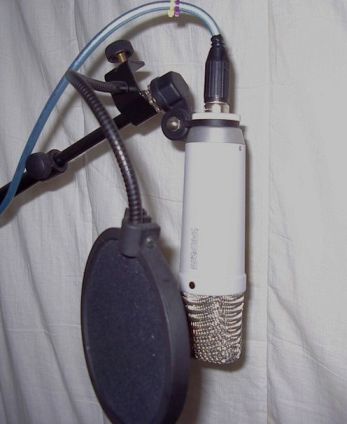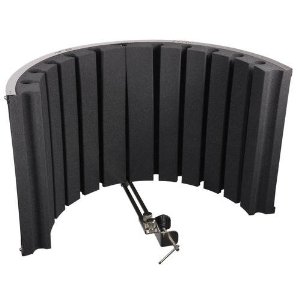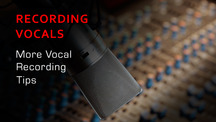Recording a great vocal track is a skill that every audio engineer will need to learn. If you are not sure how to go about capturing a great vocal performance you are now in the right place as this guide will give all the information you need to make it a perfect recording.
1) The first challenge in recording good vocals is making the vocalist feel both relaxed and confident
this is a point which is rarely spoken about and yet is exceptionally important. So try and make basic preparations in advance of the vocalist arriving. Set up talk back and headphone levels to something appropriate so you do not have any technical glitches that cause delay and unwanted stress. Find out if the vocalist wants reverb or other processing in their headphones before the session and ensure its ready to go.
Check microphones and cables are all in good working order. When the vocalist arrives try and make them feel at home and comfortable so they will give a good performance. If someone is uptight or nervous they will rarely produce a great take. Why not ask the vocalist to bring some artwork or item that they find immensely inspiring and put that in front of them when they record ? It is all about some pampering and respect in what can be an initially intimidating environment. Also bear in mind there will be an optimal point in time between warm up and tiring of the voice so try and make your recordings in the optimal time aperture.

2) Microphone choice is critical for recording vocals.
Ultimately you want to try and get the sound you want by microphone selection alone or at least as close to that sound you have in mind. It is typical to utilize a cardioid pattern microphone which has a sound pick up pattern with a focus towards the front of the microphone, somewhat rejecting sounds from the rear. (albeit mainly mid and high frequencies as most cardioids become near omni directional at low frequencies)
A common choice for recording vocals is a large diaphragm condenser microphone due to it’s crisp high frequency response and overall clarity. It is not the only choice though as high end dynamic microphones can also sound very good on certain vocals – think Sennheiser MD441 / 421 or even in some instances a SHURE SM57 or SM58. Most important is trying to match the microphone to the vocalist and genre style. Bear in mind that the proximity of the vocalist from the microphone diaphragm also affects the weight and warmth of the vocal. (more on that later)
3) Acoustics are very important.
Typically for a vocal recording in a studio the more ‘dead’ the recording the better. When I say ‘dead’ I mean the reflections in the room should be minimized. This can be achieved by using a specially made screen commonly known as a reflection filter, this will tame the reflections from any walls behind your microphone.
This approach allows more flexibility for adding artificial reverb during mixing. If you do not have a reflection filter then you can also damp reflections by hanging some duvets/quilts on the wall behind to make the acoustic more appropriate for vocal takes. In the home studio commonly people will put the microphone in the corner of the room (facing out of the corner) and hang some duvets behind. This has the benefit of there being little reflections coming from the direction the microphone is facing. Listen out to ensure the low frequencies in the voice remain natural sounding. Corners can reflect the lower registers in a voice which have longer wavelengths and are not absorbed by the quilts causing a muddy sound. In practice this is rarely a problem but it is worth listening to a test recording.

4) Always use a pop shield when recording vocals.
My preference from a performance aspect is the nylon mesh type and not the metal type. I find the nylon mesh type are far more effective than the single layer metal pop stoppers. I find 3-4 inches in front of the microphone diaphragm is a good starting point. Some vocalists pop a lot so do not hesitate to add a foam shield that often comes with the microphone itself. This can act a an additional barrier against pops – you may suffer slight loss of transparency in the high frequencies but this can be put back with a little equalization later on.
5) Microphone positioning is important.
It feels natural to put the microphone directly in front of the mouth and in many instances a great vocal sound will be achieved this way. But do not hesitate to try different positions if you find the vocal tone is not right. The distance between the microphones diaphragm and the vocalist can make a difference in the low frequency presence in the vocal. The closer the singer is the more bassy the vocal recording will be. This is known as proximity effect or bass tip up and relates mainly to cardioid microphones.
You can reduce the need for de-essing later if you position the microphone slightly off axis or above/below the mouth to subdue the ‘ess’ sounds. To enhance lower voice registers try aiming the microphone down a little, pointing towards the vocalists chest where significant low frequency sonic energy radiates. Do not hesitate to put 2 microphones in front of the vocalists at different positions, this may bring forth surprising results and provide you with options later on. It can be tricky not to hem the vocalist in and make them feel claustrophobic so position them with care.
6) When recording always record at 24 bit resolution and leave ample headroom for loud dynamic peaks.
When taking levels (which you should ideally record and listen back to as a test recording) make peaks reside at approximately -14dBFS and this will leave plenty of analog and digital headroom to avoid distortion. In any event always avoid any red lights – distortion is one of the worst defects you can cause when recording a vocal as it can be irreversible.
Many engineers will use a little dynamic compression during the vocal take as 3dB or so of gain reduction on peaks is rarely problematic. This can help keep very dynamic vocals under control. A good take can also be augmented with further compression during the mix stage if required.
7) Remember many microphones have pad switches to reduce their output level.
If this better matches with your preamp and gain structure use them, although bear in mind the signal to noise level will suffer a little. A high pass filter switch can be useful in the event you are likely to get any rumble or sub sonic sounds entering the microphone (such as traffic outside, foot fall from upstairs).
There is nothing wrong with a little corrective equalization when recording a vocal either. If you find yourself using extreme equalization then confirm optimal microphone choice and positioning first. If it seems like you need to boost or cut more than 4-5dB at any frequency then keep it within that range and adjust during the mixing if you are sure about microphone choice and positioning.
This article is a guest post by Barry Gardner who operates SafeandSound online mastering studio









